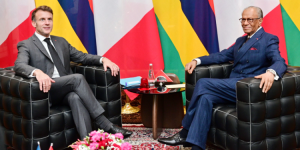
The 17th edition of the Global Gender Gap, released on June 20, 2023, examines the progress of gender equality across four key areas: health and survival, education, the economy, and empowerment. Established in 2006, the Global Gender Gap Index is the longest-standing measurement of its kind. What insights can we gather from this latest edition? What transformations are occurring in various countries? Are we observing positive advancements or a concerning decline in the overall situation?
Global progress in achieving gender parity
The 2023 edition of the Global Gender Gap Report analyzed 146 countries and assigned them scores ranging from 0 to 100 points. It is worth mentioning that the report noted and took into account the impact of the pandemic that is gradually subsiding, with figures slowly returning to levels comparable to those before COVID-19. While this is encouraging, it is important to acknowledge that achieving complete gender parity is still not within reach, even in the most advanced countries. Nevertheless, the index highlights the efforts of the nine most advanced countries in this area: Iceland, Norway, Finland, New Zealand, Sweden, Germany, Nicaragua, Namibia, and Lithuania. These countries have managed to close 80% of the gender gap, with Iceland leading the way for the past 14 years, reaching an impressive 90% parity.
There was, however, a notable development in the field of education. Between 2022 and 2023, the gender gap in education narrowed from 95.3% to 96.1%. There has also been slight progress in the health sector, with the gap decreasing from 95.7% to 96.1%. Both of these areas have returned to pre-pandemic levels. However, economic opportunities are showing a regression. The crisis has particularly impacted women in terms of career prospects and wages, leading to a decline in the economic opportunity index from 60% in 2022 to 59.8% in 2023. On the political front, there has been a marginal improvement, with the political empowerment index rising from 22.4% in 2022 to 22.5% in 2023.
Improvements in gender parity: Which countries have made the most progress?
The Global Gender Gap Report highlights significant advancements in specific regions of the world, where countries have implemented measures to improve girls' access to education, ensure universal healthcare, promote women's employment, and safeguard their rights.
Latin America and the Caribbean
Latin America and the Caribbean have witnessed the most notable progress in terms of gender parity. Since the initial global study on parity in 2006, this region has improved by 8.4 points, reducing the overall gender gap by 74.3%. It now stands as the third-largest region globally with the highest level of parity, following Europe and North America. Colombia, Honduras, Chile, and Brazil have made significant strides, improving their scores by 0.5 percentage points between 2022 and 2023. Nicaragua, Costa Rica, and Jamaica have also performed well, achieving some of the highest scores in the region.
The positive results achieved in Latin America and the Caribbean can be attributed to a focused policy aimed at combating poverty, which has yielded improvements in access to education, particularly for girls, and healthcare. According to the UN Economic Commission for Latin America and the Caribbean (CEPAL) in 2011, there was a significant reduction in poverty from 48.4% to 31.4% over a span of 10 years. The gender gap in literacy rates has also shown improvement, decreasing from a 1.6 percentage point difference in 2006 to 0.9 percentage points in 2016. Latin America and the Caribbean have nearly achieved complete parity in education, with a rate of 99.2%. Similarly, the region has made encouraging progress in healthcare, with a rate of 97.6%.
The World Bank recognizes that women's participation in economic and political life contributes to growth in these regions at all levels. In its 2012 report, "The Impact of Women's Economic Power in Latin America and the Caribbean," the essential role played by women was emphasized, which was also evident during the 2008-2009 financial crisis. Households where women were employed demonstrated greater resilience during the crisis. Progress has also been observed in the political sphere, with Latin America and the Caribbean becoming the second-largest region globally working towards gender parity in politics (35%), just behind Europe (39.1%). Colombia, Chile, and Brazil are among the countries making notable advancements in this area. Under the influence of feminist movements, Colombia experienced a transformation in its political landscape in 2022, with a significant increase of 8.3 percentage points in the representation of women in the upper house (reaching 29.6%) and a 10.2 percentage point increase in the lower house (reaching 28.9%). This remarkable progress can be attributed to high levels of women's participation, including the presence of a political party, Estamos Listos ("We are ready"), which received 100,000 votes for the first time.
Other progressive countries and regions
Europe
Europe continues to be the most advanced continent in terms of gender parity, with a score of 76.3%. This score has improved by 6.1 percentage points compared to 2022. This is mainly thanks to countries like Iceland, Norway, and Finland. Approximately one-third of European countries are among the most progressive in terms of gender parity, with Scandinavian countries leading the way. Norway, Sweden, and Iceland exhibit the highest levels of economic parity, and Iceland, Norway, and Finland have strong female representation in politics. However, some European countries, including France, Germany, Italy, and Austria, have experienced a slight decline in gender parity.
Sub-Saharan Africa
Despite varying degrees of progress, sub-Saharan Africa ranks 6th globally in terms of gender parity, surpassing South Asia and the Middle East/North Africa region. The region is projected to gain 5.2 percentage points by 2022. Rwanda, Namibia, and South Africa, along with 13 other countries, have reduced the gender gap by over 70%. Liberia, Burundi, and Eswatini show notable progress in the economic sphere, while Namibia, Lesotho, and 16 other countries have nearly achieved full parity in education. Ethiopia, Tanzania, Togo, and Namibia are among the most progressive African states in politics, with female presidents currently leading them. Nigeria, Ethiopia, and the Democratic Republic of Congo (DRC) also show slight progress. However, there are significant disparities across the region, with the DRC lagging behind in economic and educational gender parity.
Countries fighting for gender parity
While many countries have made progress, achieving complete gender parity remains a significant challenge. Regions such as Eurasia, Central Asia, the Middle East, and North Africa exhibit greater contrasts and an overall slight upward trend in gender inequality.
Middle East and North Africa
Despite the positive positions of Israel, the United Arab Emirates (UAE), and Bahrain, as well as the slight progress in Qatar and Kuwait, the Middle East and North Africa region remains the farthest from achieving gender parity, with a score of 62.6%. The overall figure has even declined slightly since the previous report. Algeria, Morocco, and Oman show the poorest results, with a decline in scores compared to the previous report. Gender parity remains a distant goal, especially in the economic sphere, where Israel has closed 68.9% of the gender gap, while Algeria is at 31.7%. In education, Israel, Kuwait, Bahrain, and Jordan have made substantial progress, whereas Algeria, Morocco, Tunisia, and Egypt lag behind. The region as a whole exhibits only 14% parity in politics, with figures declining in seven of the thirteen countries studied, including Egypt, Algeria, and Tunisia. Israel and Tunisia have also seen a decrease since the previous year, but Qatar, Kuwait, Bahrain, and Lebanon have higher female representation in politics.
South Asia
With a rate of 63.4%, South Asia is the second least advanced region in terms of gender parity, slightly ahead of the Middle East and North Africa. The situation shows marginal improvement in India, Bhutan, and Bangladesh (+0.5%), particularly in terms of women's participation in the economy. Progress is also observed in education, with near parity achieved in the Maldives, India, and Sri Lanka. Conversely, Afghanistan, Pakistan, Sri Lanka, and Nepal rank lower in gender parity. At the current rate, it would take 149 years for the region to achieve perfect parity. However, South Asia continues to face challenges in achieving political parity, with some institutions being less open to women's participation.
Latin America and the Caribbean: The challenge is in women's political participation
Despite the positive figures in Latin America and the Caribbean, significant disparities persist. Women in these regions continue to have fewer rights compared to men, with less than three-quarters of the recognized rights. By 2022, only two countries had reformed their political systems to promote gender parity. Belize, Paraguay, and Guatemala perform poorly in this aspect. In Colombia, where women have made notable progress in politics, the fight for gender equality continues. Violence against women remains a pervasive issue, even at the highest levels of government. By 2022, Colombia was not meeting the quota it had implemented for at least 30% female representation in political bodies. The report estimates that Latin America and the Caribbean would take at least 53 years to achieve full gender parity.
Eurasia and Central Asia: Slow progress, stagnation, and decline
Eurasia and Central Asia have witnessed the slowest progress since 2006, with a modest increase of 3.2 percentage points. With a score of 69%, it ranks as the fourth region in terms of gender parity out of the six regions studied. However, some progress has been made. Moldova, Belarus, and Azerbaijan have achieved 70% parity in economic terms, with Moldova showing the most progress since 2022. In education, the trend is moving towards near-total parity (99%), and similar progress has been observed in health and survival (97% parity).
East Asia and the Pacific: Disparities and slow progress
With a parity score of 68.8%, East Asia and the Pacific rank fifth globally. Similar to Eurasia and Central Asia, progress in the region has been slow, with a marginal increase of 2.8 percentage points. The figures hide profound disparities. Some countries, including Australia, the Philippines, and New Zealand, have achieved high scores and improved their results compared to 2022, particularly in terms of women's political representation. Thailand and Cambodia have made progress in education, and Malaysia has reached near-parity in education along with New Zealand and other states in the region. However, Fiji, Japan, and Myanmar continue to face challenges, and China has experienced a decline.
Key insights from the Global Gender Gap Report 2023
The top 10 most advanced countries, led by Scandinavian nations such as Iceland, Norway, and Finland, remain at the forefront of gender parity. New Zealand follows closely, and Sweden and Germany rank high as well. Nicaragua is the only Latin American country in the top 10, owing to its progress in education, health, and women's political participation (although the gender gap in politics has stagnated at 62.6%). Namibia, the sole sub-Saharan African country in the top 10, has achieved full parity in education and health, with progress in the economy (78.4% gender gap closed). However, this progress has slowed since 2018. Lithuania has re-entered the top 10 due to the election of Ingrida Šimonytė as Prime Minister in 2020 and an increase in women's representation in politics. Belgium completes the top 10 rankings.
Some notable political shifts are worth mentioning. In the United States, which ranks 43rd out of 172 countries, the debate surrounding the repeal of the federal right to abortion remains divisive. Additionally, the healthy life expectancy for women is declining faster than for men, and the increase in the number of women MPs is marginal. Furthermore, like many countries worldwide, the United States has yet to see a female head of state.
The report emphasizes the global nature of its study, highlighting significant disparities within the major regions studied and even within individual countries. According to the index, it would take 131 years to achieve complete gender parity in the countries analyzed.



















